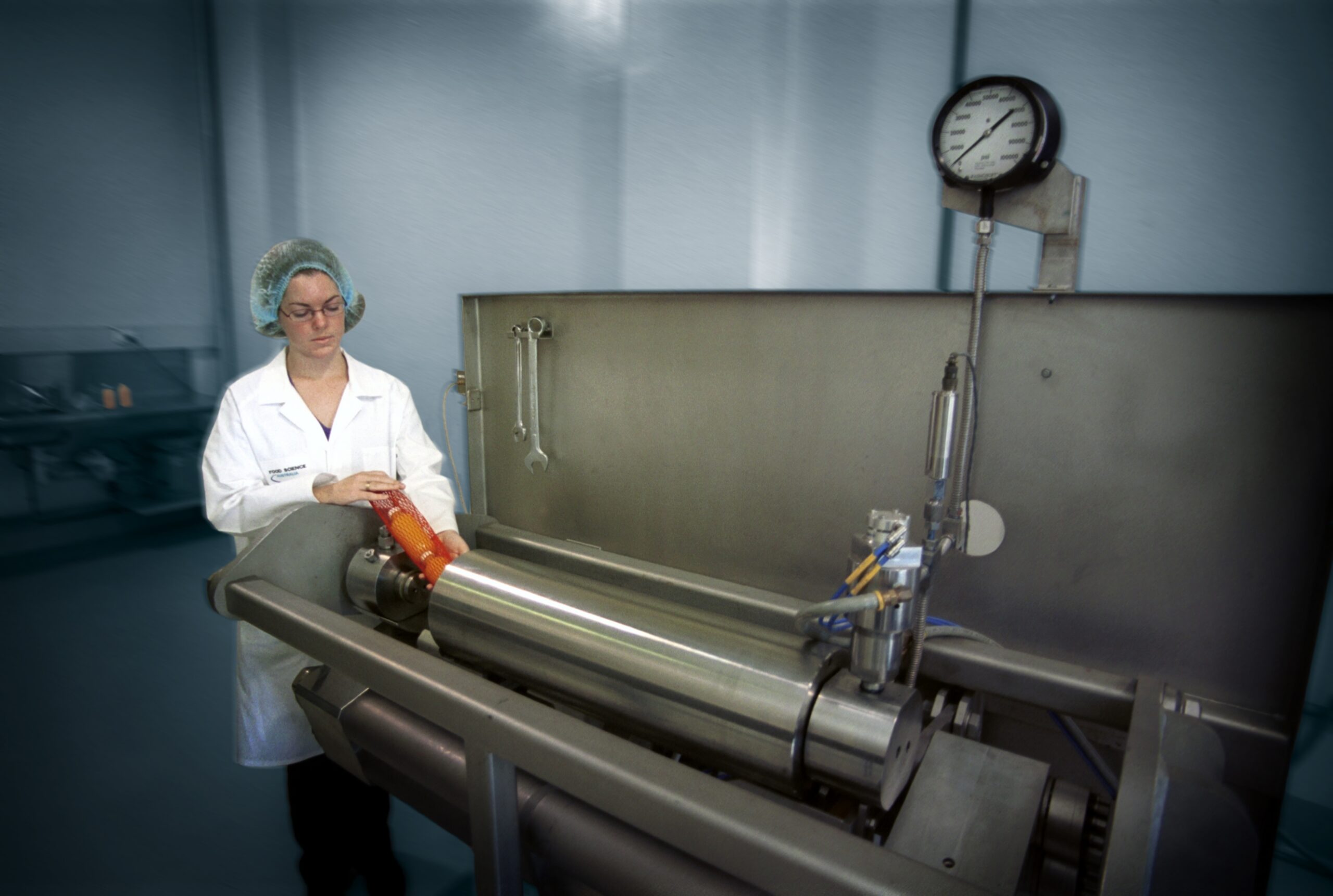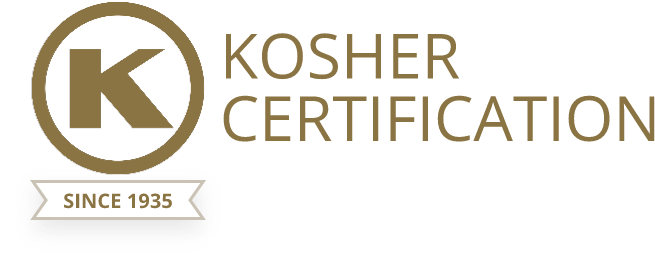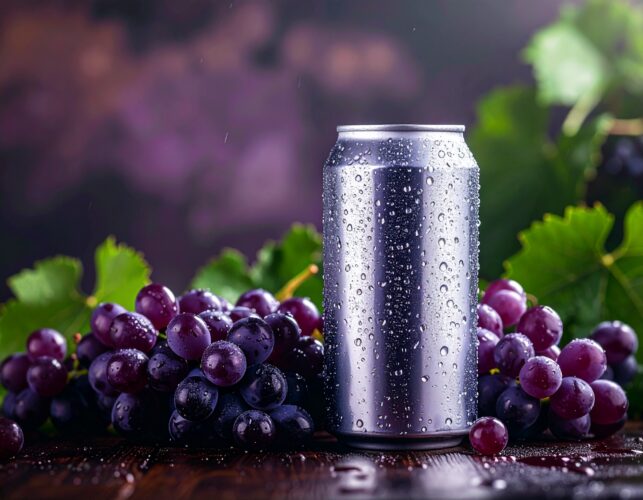
What are the advantages, disadvantages, and implications for kosher?
High Pressure Processing, or HHP, uses physical pressure instead of heat to kill pathogens and secure shelf life in food products. This pressure is applied to the outside of the product packaging using a vat of water.
There are various considerations and benefits to HPP in for the manufacturing chain, especially with regard to kosher. I spoke with OK Kosher Rabbinic Coordinator Rabbi Shlomo Klein about this method. Rabbi Klein works out of our West Coast, USA office and has extensive experience designing kosher programs to certify products that typically undergo HPP.
In today’s post, we’re going to take a deep look into what HHP is, how it contrasts with other methods, and how we fit it into your kosher programs.
But first, let’s start with the background.
The Origin of Conventional Pasteurization in Food Production
In the 1860s, Louis Pasteur, a 19th century French scientist, invented a solution to the problem of food spoilage and the transmission of diseases through contaminated milk.
Named after the inventor, Pasteurization is a process of heat treatment that aims to kill or inactivate harmful microorganisms, such as bacteria, viruses, and fungi. Since Pasteur’s time, pasteurization has been applied to various other food and beverage products, such as juices and canned foods. As a result, the food industry has widely adopted it as an effective method for enhancing food safety and preserving the quality of perishable items.
Cooking Up a Solution to a Massive Public Health Problem
Believe it or not, prior to pasteurization’s invention, consuming raw milk was a common practice. But this often led to the spread of illnesses like tuberculosis, brucellosis, and typhoid fever when these pathogens were present in the milk – which they often were.
Louis Pasteur discovered that heating liquids, such as milk, to a specific temperature for a set period of time could effectively kill most pathogens while retaining the product’s quality. The process involves heating the liquid to a temperature below its boiling point, typically around 72°C to 85°C (161°F to 185°F), and maintaining that temperature for a certain duration, usually between 15 to 30 seconds. After the heat treatment, the liquid is rapidly cooled to prevent recontamination.
Pasteurization extended the shelf life of perishable foods, making them more accessible and reducing waste. Naturally, similar to most technological advancements, this changed the industry completely, in areas from manufacturing and bottling to logistics and distribution. Suddenly, food distribution across larger geographical areas became possible.
Thus a widespread public health crisis was stopped in its tracks, and the industry didn’t look back.
Until it did…
A Counter-Argument to Pasteurization
Recently, however, individuals have expressed concerns about pasteurization’s effects on foods. The trend of consuming unpasteurized milk emerged based, in part, on some cultures’ traditions of consuming raw animal milks for their rich nutrient profiles and health benefits. That said, one could associate the healthfulness of raw milk and all the benefits it brings to its freshness. In addition, the health of the animals and the cleanliness of the milking conditions all play a role in determining how safe any raw milk might be to consume. And it follows that it’s never advisable to drink raw milk that shows signs of spoilage.
Here are a few arguments put forth by proponents of raw milk:
Nutrient Preservation
Raw milk enthusiasts argue that pasteurization can reduce or destroy certain heat-sensitive nutrients, enzymes, and beneficial bacteria naturally present in milk. They claim that consuming raw milk provides additional health benefits due to the retention of these elements.
Digestive Benefits
Some proponents claim that raw milk contains enzymes that aid digestion and improve nutrient absorption. They believe that pasteurization destroys these enzymes, making pasteurized milk less digestible.
Flavor and Quality
Raw milk advocates often argue that pasteurization alters the taste and quality of milk, leading to a bland or “cooked” flavor. They believe that raw milk has a more natural and desirable taste.
Immune System Support
It is suggested by a small group of raw milk proponents that raw milk contains beneficial bacteria and antibodies that can support the immune system and protect against certain illnesses. They argue that pasteurization eliminates these potentially beneficial components.
The Centers for Disease Control and Prevention (CDC), the U.S. Food and Drug Administration (FDA), and other health organizations strongly recommend pasteurization as a measure to ensure milk safety. They emphasize that pasteurization effectively destroys pathogens while retaining the nutritional value of milk.
In addition, in the United States, the legality of selling raw, unpasteurized milk in retail stores is regulated state-by-state. OK Kosher commits itself to compliance with local, state and federal law. Therefore, we will only certify raw milk in states where it is legal to sell.
In addition, in the United States, the legality of selling raw, unpasteurized milk in retail stores is regulated state-by-state. OK Kosher commits itself to compliance with local, state and federal law. Therefore, we will only certify raw milk in states where it is legal to sell.
And while pasteurization may be considered by some to be overkill, to others, it’s not enough.
Ultra-High Temperature (UHT) Treatment – the Super Pasteurization Method
As mentioned the typical temperature range for pasteurization is around 72°C to 85°C (161°F to 185°F), and the duration of heating usually ranges from 15 to 30 seconds. Pasteurization effectively kills or inactivates most harmful microorganisms, but it may not eliminate all spore-forming bacteria and certain heat-resistant pathogens.
Ultra-High Temperature, or UHT treatment, also known as ultra-pasteurization, is a more intense heating process. It involves rapidly heating a liquid to a much higher temperature than pasteurization, typically between 135°C to 150°C (275°F to 302°F), for a very short duration, usually ranging from 2 to 5 seconds. This high temperature kills or inactivates almost all microorganisms, including spore-forming bacteria and heat-resistant pathogens, effectively sterilizing the liquid. The liquid is then rapidly cooled and packaged in a sterile environment to prevent recontamination.
UHT treatment allows for long shelf life without refrigeration until the package is opened. Think about the milk in a rectangular box, not in the refrigerated section of the store, but on a middle shelf. That’s UHT milk.
So, the key differences between pasteurization and UHT treatment are:
Temperature
Pasteurization uses a lower temperature range (72°C to 85°C) compared to UHT treatment (135°C to 150°C).
Duration
Pasteurization involves heating the liquid for a shorter duration (15 to 30 seconds) compared to UHT treatment (2 to 5 seconds).
Microorganism Elimination
Pasteurization kills or inactivates most microorganisms but may not eliminate all spore-forming bacteria and heat-resistant pathogens. UHT treatment, on the other hand, effectively sterilizes the liquid, killing or inactivating almost all microorganisms, including spore-forming bacteria and heat-resistant pathogens.
Both pasteurization and UHT treatment are methods used to enhance the safety and extend the shelf life of food and beverage products, but UHT treatment provides a higher level of microbial reduction and allows for longer shelf stability without refrigeration.
Opting for Pasteurization vs. HPP. And Where the Raw Advocates Have a Point (or Four)
Both UHT treatment and traditional pasteurization can result in some nutrient loss that may vary depending on the specific nutrient and the processing conditions.
Here are some general considerations:
Heat-Sensitive Nutrients
UHT treatment, due to its higher temperature, may result in slightly more nutrient loss compared to traditional pasteurization. Heat-sensitive nutrients such as certain vitamins (e.g., vitamin C, thiamin, and folate) and some enzymes can be more affected by higher temperatures.
Protein Denaturation
Both UHT treatment and pasteurization can cause some denaturation of proteins in milk. Denaturation can affect the structure and functionality of proteins, but the impact on nutritional value is minimal since the essential amino acids remain intact.
Mineral Content
Further, both processes do not significantly affect the mineral content of milk, such as calcium and phosphorus. These minerals are relatively stable under heat treatment. Milk remains a good source of essential nutrients, including protein, calcium, vitamin D, and other vitamins and minerals, regardless of the heat treatment process.
Effectiveness
It’s worth considering that the safety benefits of pasteurization and UHT treatment outweigh the potential nutrient loss. Both processes are crucial in reducing the risk of foodborne illnesses by eliminating or reducing harmful pathogens in milk.
Fast Forward to Now(ish): High Pressure Processing – HPP
HHP (High Pressure Processing), also known as High Hydrostatic Pressure Processing, High Pressure Pasteurization or Cold Pressure Processing, is a food preservation technique that uses high levels of – you guessed it – hydrostatic pressure (geek out here) to kill pathogens and extend the shelf life of food products!
The origins of HPP are actually not far off from the time when Louis Pasteur invented Pasteurization. HPP, too, was discovered in the 19th century when French physicist Blaise Pascal first discovered the effects of pressure on matter. But it wasn’t until the 1990s that HHP processing gained traction as a commercial food preservation method. That’s specifically because it’s a non-thermal, non-chemical alternative to traditional methods such as pasteurization.
According to Rabbi Klein, almost anything that can be pasteurized can be HPP. Juices are popular with this method, as are various dips (like hummus) baby foods and other purees.
Other Benefits of HPP
A distinguishing feature of HPP is that the procedure is done with the product in its final package. This is opposed to pasteurization, which us typically done in a bulk vat. One can already begin to drum up some possible benefits to this method. But there are some considerations and precautions needed too.
Remember, HPP uses pressure, not heat. Applying direct, intense pressure to, let’s say, a sealed plastic package of guacamole would cause it to burst. To circumvent this problem, a batch of product us placed into a basket, or “boat,” to use an industry term, fill with water. The water temperature is about 50 degrees – generally considered “cold” for food and beverage industry standards. The water surrounds the packaged products and the outer walls of the mechanism apply pressure to the water. And because this pressure is applied equally on all sides, the packaging doesn’t bust. Usually. Per Rabbi Klein, the material of the bottle needs to be pliable and somewhat expandable, such as many plastics, in order to withstand this procedure (more on this and why it matters for kosher, later).
So how does HPP work?
HHP processing works by subjecting the product to extremely high pressures, typically ranging from 100 to 800 megapascals (MPa), which is equivalent to 14,500 to 116,000 pounds per square inch (psi). The high pressure is uniformly applied to the food for a specified duration, usually a few minutes to several minutes, depending on the product. This high-pressure environment, similarly to a heated situation, is too much for the germs to withstand. Thus, HPP results in a germ-free product. Voilà! (that’s French for “there you go!”).
Heath and Safety: That’s the Goal for Consumers – So Too for Companies.
It all boils down to this. Or, if you prefer, it all breaks down under pressure, to this:
The pressure applied during HPP breaks down the bacteria and pathogens into smaller pieces. So, it’s still there, but inactive.
Why is this this a draw?
Think about the pro-raw milk people we mentioned earlier. With the rise of nutrient-dense, natural and nutritional foods in popularity, consumers are constantly looking for products to fill the niche of healthful, while still employing modern-day safety standards.
Kosher-Related Concerns with HPP – What We Look Out For
There are a number of factors that come into play when certifying HPP manufacturing kosher.
HPP Plants Are Third Party Facilities
By nature, HPP facilities are usually third-party servicers. Essentially, they’re like a co-packer or toll manufacturer in that they aren’t producing any products. Kosher products made in one facility often get sent to a separate HPP facility servicing clients treating both kosher and non-kosher products. Therefore, when an HPP facility is kosher certified, it’s only approved for kosher use with supervision, and with certain, specific kosher clients and product runs. This is the case even for most of the largest companies using HPP that we certify. This is mostly due to the costliness of HPP equipment. However, this isn’t the case across-the-board, and a few large companies have recently built out their own HPP facilities in-house.
In general, when we certify any third party manufacturer, we designate the facility as either “single-status” (i.e. all kosher dairy, or all kosher Pareve, etc.) or “non-single-status.” This later type requires far more extensive tracking systems due to the added variables involved.
As one could guess by now, HPP facilities are considered non-single-status. However, as you’ll read below, due to considerations like temperature, it’s potentially easier to track HPP products for kosher than it is with other non-single-status processes, like toll manufacturing or co-packing.
Temperature and Kosher HPP
We’re very cool with HPP.
To those in the know, with kosher certification, heat is the classic problem account for. Whenever heat factors into production, we need to set up segregation between kosher and non-kosher lines, equipment and runs. For instance, with cooking, steaming, melting, baking, or the like, we use methods like kosherization or caustic cleaning methods. Sometimes we even require separate facilities or work areas, depending on the sensitivity level of the ingredients.
With conventional pasteurization, after a non-kosher run, we’d generally need to leave the vat unused for a 24-hour downtime, then kosherize it before starting a kosher run. But since HPP really is a cool process, the heat issue for kosher falls away!
Pressure: How High is Too High?
Earlier, we touched upon the possibility of the product packaging bursting under the pressure of HPP. And since HPP facilities process both kosher and non-kosher products, we need to address this.
The good news is that, even in the event of a package bursting, the kosher experts (that’s us) still won’t need to stop production or kosherize the vat. This is due, according to Rabbi Klein, to the now-common practices of cool-temperature process, and the existence of Clean-in-Place (or CIP) systems for re-setting the HPP process. On top of that, HPP systems also typically get cleaned with caustic sanitizers between runs. This makes it even more feasible to keep kosher run going uninterrupted.
Furthermore, HPP facilities have become increasingly aware of and proactive in preventing cross contamination with allergens. This used to be more the case with the larger companies, but is catching on more recently with smaller ones too. And as you could guess, it’s all the better for kosher.
The only caveat, then, is the actual contaminated water. When a package bursts during a non-kosher run, residue will contaminate the water. The issue there is that standard industry practice is to reuse water between productions. So when a kosher run us up next, the supervising rabbi will require prompt removal of the compromised product, and a water change in between the two runs.
Even when this does happen, it’s still far less inconvenient that kosherizing a hot pasteurization vat. So again, HPP for the win!
Labelling Systems for Kosher HPP
Kosher manufacturing always requires strict control on its labelling systems, and it’s no less important with HPP. In fact, it’s even more delicate.
We spoke about the fact that products enter the HPP water tank sealed in their final packaging. In most cases this only includes the actual vessel containing the product (for instance the hummus tub or juice bottle). In some cases, the outer label is pre-printed or shrink-wrapped onto the package. But in most scenarios, a company will opt for a paper or other non-waterproof label. In this case, the product goes into the pressure tank completely unmarked, that is, before labelling.
This poses a potential conundrum for kosher. According to Rabbi Klein, OK Kosher’s standard practice is to set up strict tracing system for this.
Here’s how the HPP workflow typically goes:
The (kosher) manufacturer sends the packaged, unlabeled product to the HPP facility for processing.
Then it gets sent back to the original facility, or out to yet another facility, for labelling. In this later case, kosher and non-kosher products will need careful differentiation in order to prevent mix-ups in the labelling.
As one could imagine, this necessitates a solid tracing system. According to Rabbi Klein, OK Kosher will assign the unlabeled but already HHP’d product its own assigned license plates or codes. Specifically, to differentiate between companies, we’d use unique customer codes. To differentiate between product kosher-statuses, we’d use product codes. For instance, OK-D for dairy-containing and OK-Pareve for non-dairy-containing products from the same company.
With these measures in place, our rabbinic coordinators can have a firm handle on which products we certify, what their kosher details are, and which we don’t certify.
In Conclusion
We hope you’ll come away from this post more equipped with the knowledge your company needs to consider HPP for your kosher program. Or to consider kosher certification for your HPP products.
Either way, when you get to the point of moving forward with certifying your products, we’re here to help. If you’re ready to apply for certification, hit the link below. To speak with an OK Kosher Certification Specialist about your particular needs and questions, click below for a free, detailed consultation.
Apply For Kosher Certification Now
Sources and further reading: https://pubmed.ncbi.nlm.nih.gov/34056857/, 2021, Comprehensive Reviews in Food Science and Food Safety published by Wiley Periodicals LLC on behalf of Institute of Food Technologists.
The information presented in this blog post is based on research, general knowledge, and/or the author’s understanding of the subject matter. This blog is provided for informational purposes only and should not be relied upon by the reader or considered as professional advice. For specific guidance on any given topic, the reader should consult a qualified professional in the given field. OK KOSHER DISCLAIMS ANY LIABILITY FOR ANY LOSS OR DAMAGES RESULTING FROM RELIANCE ON THE INFORMATION PROVIDED IN THIS ARTICLE.


 EN
EN  ZH
ZH  KR
KR  BR
BR  ES
ES  IN
IN  IL
IL 



